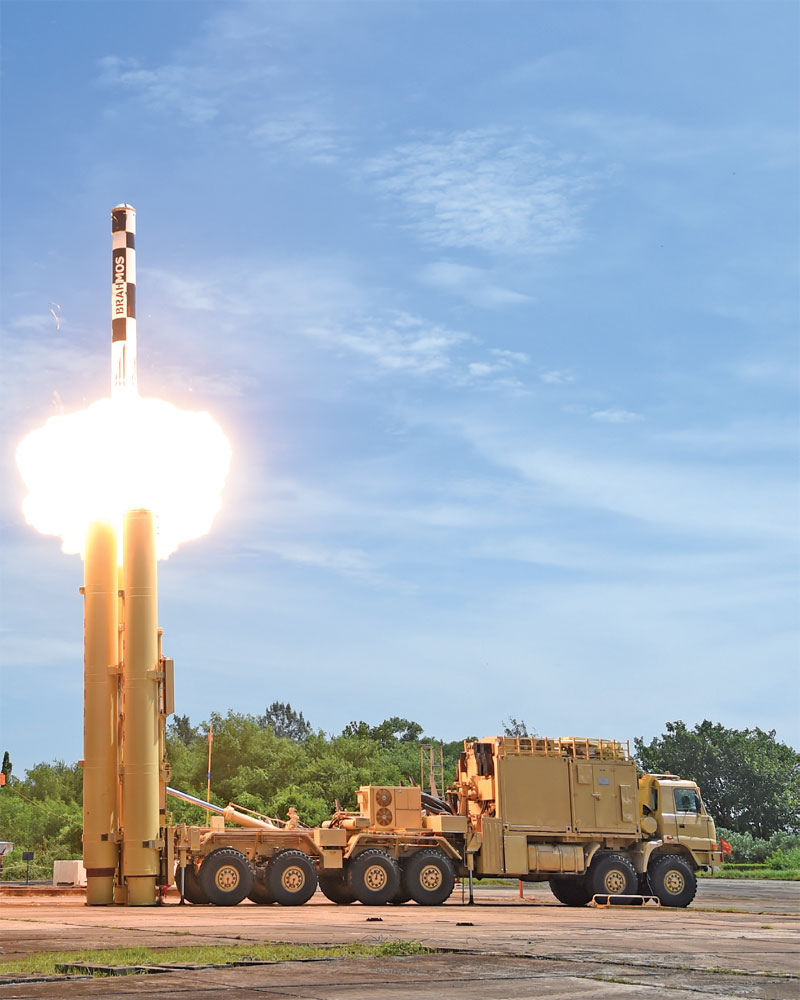Collaborate and Grow
 Maj. Gen. (Dr) R.S. Mann
Maj. Gen. (Dr) R.S. Mann
India’s defence exports have demonstrated significant growth, reaching Rs 23,622 crore (approximately USD2.8 billion) in FY 2024-25, a 12.04 per cent increase from the previous year, with a target of Rs 50,000 crore by 2028-29. While the initiatives of the ministry of defence (MoD) have played a crucial role, several underlying, on-the-ground factors have also contributed to this success. A combination of market dynamics, industrial capabilities, and strategic advantages that extend beyond government promotion efforts have contributed to this surge. Some of the key additional factors that have enabled this encouraging trend are as under.
- Strategic Autonomy and Non-alignment. India is a neutral supplier in a polarised world and nations wanting to avoid entanglement in great power rivalries find that India is a non-controversial and a reliable source.
- Defence cooperation agreements are being signed with an increasing number of nations. These enable Indian defence industry in finding new customers.
- Competitive pricing vis-à-vis western or Russian equipment attracts nations with limited defence budgets to Indian products, which provide comparable capability at much lower costs.
- Customisation and adaptability to buyers’ needs based on terrain and employment configurations, gives India an edge over other nations that offer standardised solutions.
- Diversified product portfolio from small arms and ammunitions to advanced systems like missiles, drones and aircraft components.
- Reliability of Supply. Supply chain disruptions have occurred due to the wars in Ukraine and Gaza and India has been able to step in to a limited extent, as a reliable supplier.
Despite the surge in defence exports, latest SIPRI data indicates that India is 23rd in the rankings of defence exporters and has only a 0.2 per cent share of the export market. To enable further growth and achieve its full potential, several systemic weaknesses need to be addressed. The sector suffers from a lack of a cohesive export strategy, bureaucratic inefficiencies, and insufficient R&D investment, hindering its ability to compete with major global players. Moreover, concerns about product reliability and delays in delivery affect India’s credibility as a dependable arms supplier. These hinder sustained growth and global competitiveness. To enhance and sustain this momentum, India needs to adopt a comprehensive and long-term strategic approach.

India-Russia collaboration BrahMos is now a dated technology
Challenges to India’s Defence Exports
Lack of a Coherent Export Strategy: India’s defence export efforts are characterised by fragmented policies and initiatives, placing the onus on individual defence industries to identify international buyers and sell their products.
Inefficient Export Management and Coordination: The absence of a centralised agency to coordinate stakeholders, execute export plans, and achieve targets results in overlapping jurisdictions between the ministry of defence (MoD) and the department for promotion of industry and internal trade (DPIIT), leading to inefficiencies. Bureaucratic hurdles and delays in obtaining licenses and clearances further deter potential buyers.
Limited Global Market Share and Credibility: Despite exporting to over 90 countries, India accounts for only 0.2 per cent of global arms exports and ranks outside the top 22 arms exporters. The perceived preference of the Indian armed forces for foreign equipment over indigenous systems undermines confidence among potential buyers.
Inadequate Manufacturing Capacity: India’s manufacturing base struggles to meet the demands of both domestic and export markets, particularly for advanced systems like high-end electronics, propulsion systems and advanced materials. Supply chain bottlenecks frustrate buyers and harm India’s reliability and reputation. The lack of robust logistics and after-sales support further undermines export competitiveness. Defence Public Sector Undertakings (DPSUs) often face order backlogs and significant delays in meeting domestic delivery deadlines. The gap in production capacity compared to dominant global players limits India’s ability to fulfil large or timely export orders.
Geopolitical and Diplomatic Challenges: E
Subscribe To Force
Fuel Fearless Journalism with Your Yearly Subscription
SUBSCRIBE NOW
We don’t tell you how to do your job…
But we put the environment in which you do your job in perspective, so that when you step out you do so with the complete picture.








